Vermont Creamery’s Recipe for Success | Yankee Magazine
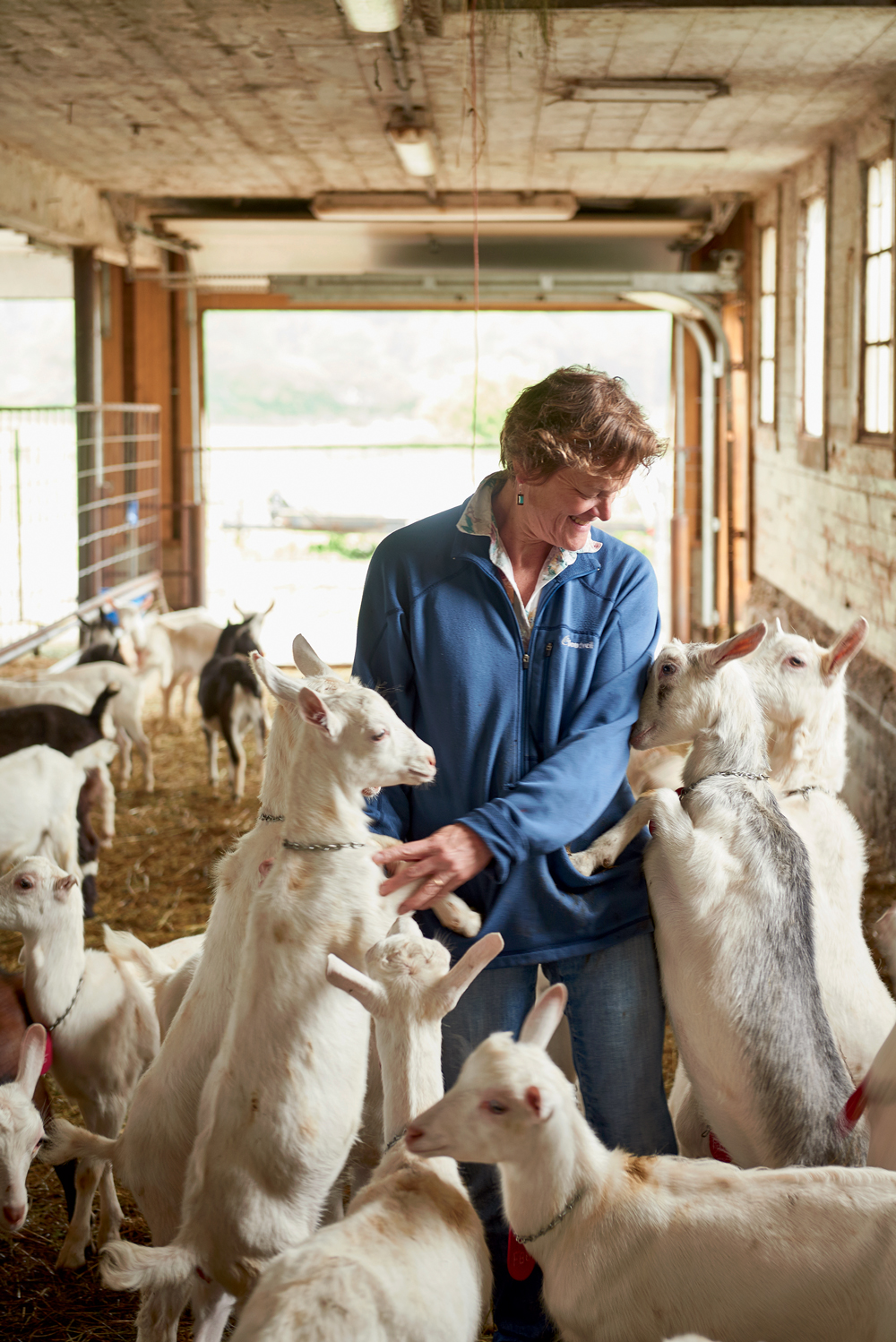
Allison Hooper’s goats gather around for a good scratch (and, hopefully, treats).
Photo Credit : Heath Robbins
Photo Credit : Heath Robbins
Do goats hold the key to Vermont’s dairy future?
On a wet early-summer day in Vermont, the 4-month-old kids at Ayers Brook Goat Dairy line up at a fence in the big barn, curious about a new group of visitors, eager and winsome, bringing to mind golden-retriever puppies on stilts. When Allison Hooper—a partner in the operation and, as co-founder of Vermont Creamery, the state’s best-known cheesemaker—steps into their pen, they bound over, rooting in pockets for a treat, rising on hind legs for a scratch. Her reaction is mostly unsentimental—Ayers Brook has nearly 500 head to manage, and Hooper is scanning them for signs of sore mouth, a highly contagious, though not particularly dangerous, viral infection that herd manager René De Leeuw has been treating in some kids, now quarantined—but yes, she’ll admit that they’re cute. Cute and demanding.
Case in point: Goats don’t like to get wet. They’re not grazers, like cows, eating any vegetation at ground level. They’re browsers, gleaning choice leaves, bark, and stems, preferring hay to grass. Mostly “they like to be indoors,” Hooper says. “They can go outside, they hang out, but when they’re eating, they’re inside.” No long, lazy days on Vermont’s green hillsides for these divas. They’re smart, stubborn, and disease-prone. And yet Hooper believes that the future of Vermont dairy should rest—at least in part—on more goat farms.
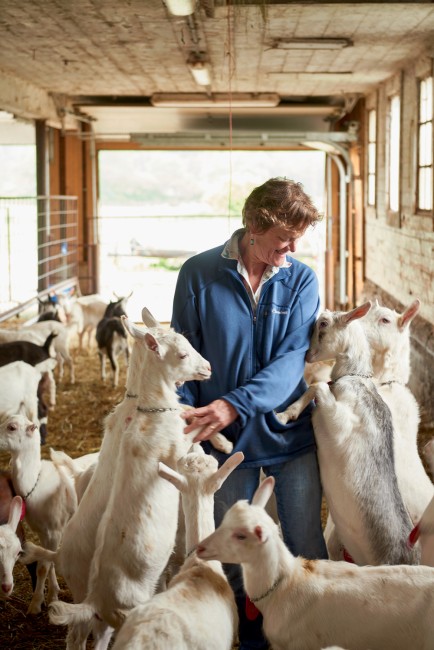
Photo Credit : Heath Robbins
To that end, Vermont Creamery and Evergreen Conservation Partners, a consortium of agriculturally minded private foundations, purchased the former Hodgdon farm in Randolph, Vermont—30 minutes down I-89 from the Creamery’s headquarters in Websterville—to create a model goat dairy. They did this not merely to provide milk for their own operation, but to develop best practices, to improve genetic stock, and to demonstrate to other farmers and to students that goats represent a viable alternative to cows in a landscape where milking 100 head of cattle no longer guarantees a living wage. “Those original family homesteads with 100 acres don’t provide enough land to feed the number of cows farmers now need to be at scale,” Hooper says. “If you could say to that farmer, ‘If you milked 500 goats, you could harvest the feed on your 100-acre farm,’ I think we can build that story and connect them with investors who want to be helpful.” With everything they’re learning at Ayers Brook, the team hopes to create a more-level path for future farmers.
The demand for the milk is already established. Vermont Creamery, which began in 1984 as an experiment with co-founder Bob Reese, now produces nearly 4 million pounds of product annually: fresh chèvre in many forms, aged goat’s-milk cheeses such as Coupole (a 2014 Yankee Food Award winner) and Bijou, as well as cow’s-milk products like crème fraîche and cultured butter. To feed all that production, the Creamery supplements its Ayers Brook output with milk from 17 other Vermont farms and 10 additional farms in Ontario. Hooper and Reese would prefer that it all came from Vermont. It’s where their business took root, and it’s the place they call home.
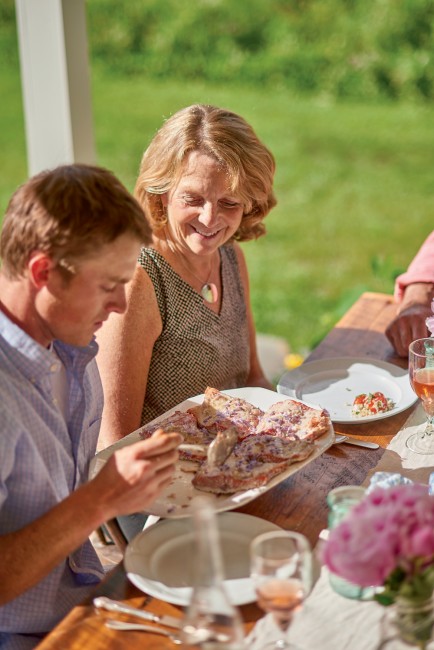
Photo Credit : Heath Robbins
Allison’s own home is a serene 1815 Cape on a 67-acre farm that she shares with her husband, Don Hooper, a gregarious former state senator and National Wildlife Federation representative. Set on a west-facing hill, it boasts a front porch wide enough for a table and chairs and a view of the barn where Vermont Creamery first got its start.
It was an inauspicious beginning. Back in 1983, Reese was the marketing director for the state’s agriculture department. Hooper was a dairy-lab technician, a recent college grad just returned from a stint studying cheesemaking in France. Preparing for a formal dinner with the state’s Restaurant and Lodging Association, Reese asked Hooper to make 10 pounds of fresh chèvre, a rare delicacy at the time. “She saw a free dinner out of it,” Reese jokes. “She went and sat at one of the round tables. After her course was served, a couple of chefs put their business cards in front of her and said, ‘I want to talk to you about buying some goat cheese.’”
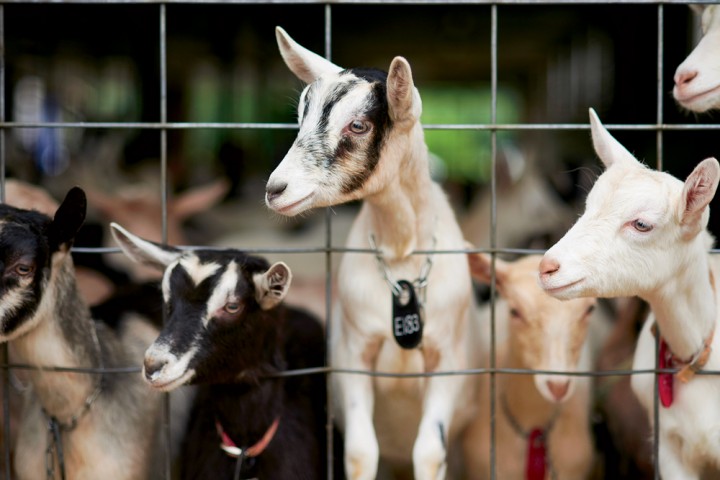
Photo Credit : Heath Robbins
“What should I do now?” Hooper thought. She was 23. In France, she’d seen a glimmer of a life that she wanted to replicate in Vermont. And Reese was ready for a change. So they began talking possibilities. At the time, the state had just 13 licensed dairy, ice cream, and cheese plants, down from more than 200 at the turn of the century. So they decided to gamble. Vermont Butter & Cheese was born. (The company changed its name to Vermont Creamery in 2013.)
“We were so in the weeds, so day-to-day,” Hooper says, now sitting on her porch with Bob Reese and his wife, Sandy. The Hoopers are hosting a small gathering of employees to reminisce and celebrate more than 30 years in business. “I made the cheese, we sold the cheese. Make the cheese, sell the cheese. Collect the money, meet the payroll.” For the first four years, Hooper was “chained to a cheese vat seven days a week,” Reese says. Meanwhile, he worked from home, taking orders, marketing, making deliveries.
But their timing couldn’t have been better. As the business was growing, so was the American culinary scene and artisanal-cheese movement. Hooper might not have been the first small-batch, European-inspired cheesemaker in the United States, or even in New England. But in addition to building the business and raising three sons, she served on the board of the American Cheese Society, helped found the Vermont Cheese Council and the Vermont Cheesemakers Festival, mentored other cheesemakers, and has had an outsized influence on American cheese-making.As demand grew and new hires freed her from the cheese vat, Hooper became the ever-more-public face of the company, while Reese held it all together behind the scenes.
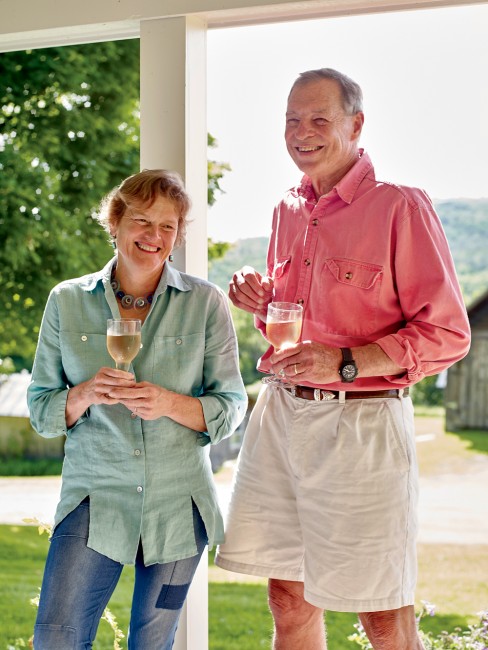
Photo Credit : Heath Robbins
Today, Vermont Creamery’s staff includes a president (French native Adeline Druart), a team of sales reps, and a marketing manager. Hooper and Reese still keep up punishing travel schedules, but both have a bit more time to relax and entertain. “Don is constantly making lists of dinner-party ideas at any time,” Hooper says. “It’s often weeknights. But I don’t worry about it. People just want to get together. We don’t fuss over making everything perfect. We just have wine and lots of great cheese.”
When the Hoopers’ son Miles, now Ayers Brook’s farm manager, arrives, everyone sits down to eat. Don pauses, wineglass in hand, always ready with a toast. “To health and wealth and time to enjoy both,” he says. “Cheers!”
The following menu presents several delicious ideas for cooking with three of the Creamery’s signature products: fresh goat cheese, butter, and crème fraîche. In keeping with the Hoopers’ style, they’re exquisitely simple. All were originally made with Vermont Creamery’s products—you’ll find them at many supermarkets, cheese shops, Whole Foods, and Wegman’s stores—but we tested them with several brands and all worked well.


